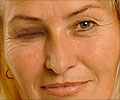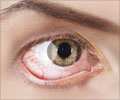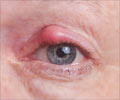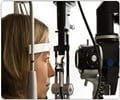Do your eyes get tired and you suffer from headache while staring at the computer screen for long hours? Here are some tips to help you resolve this issue.

The following signs and symptoms help you realize that your eyes are getting affected by your computer.
a) Pain and tension around the eyes resulting in a headache within a few minutes.
b) Red and dry eyes.
c) Fatigue.
d) Sensitivity towards light.
f) Blurred and double vision.
Read It in Big Letters: The smaller the letters, the more your eyes have to strain themselves to read the letters. Hence, keep the font size large and give a break to your eyes. Make sure your screen resolution is at high for an easy visibility of the letters.
Switch to Print: We know that there is an ocean of information and it is easy to pick what you want to read from the number of websites present in the internet, but sometimes, it doesn’t harm to rely on books and print journals for a change. To prevent eye-strain, print out the important content and read.
Take a Break: Glaring continuously on your computer strains your eyes and causes headache and fatigue. Remember to take a break of 20 seconds after every 20 minutes. This means you need to take your eyes off from the computer and stare into space or object that is approximately 20 feet away from you. You can also take a short trip to the water cooler or restroom.
Use Proper Lightning: Make sure that you have ambient lighting when you are working on your computer. Too much brightness can strain your eyes badly. The lighting should be half as bright as that are typically found in many offices. Many people feel comfortable with a fluorescent lamp lit on the top of their monitor. This trick too helps to reduce computer eye-strains. You can also try changing the resolution of the monitor to avoid straining.
Get LCD’s: If you are still working on your old cathode ray tube monitors, then it’s time that you upgrade your system and bring home an LCD monitor. LCD monitors are less harmful to your eyes than the old-fashioned ones. When you purchase a new monitor for yourself, go for the screen with the highest resolution possible. LCD / LED screens come free of flickering issues, frequently found in old tube monitors. Flickering causes more strain to your eyes. Select a display that has screen size of at least 19 inches.
Blink Often: Many people blink less while staring at their computers. Dry eyes can result from prolonged hours of working on a computer. Blinking produces tears in the eyes and helps them keep the moisture and lubrication in the eye. So don’t forget to blink often.
References:
http://www.riversideonline.com/health_reference/Working-Life/WL00060.cfm
http://www.allaboutvision.com/cvs/irritated.htm
Source-Medindia













